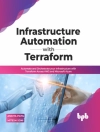This book is based on the “Summer Simulation Multi-Conference” (SCSC), which has been a prominent platform for the dissemination of scholarly research in the M&S community for the last 50 years. In keeping with the conference’s seasonal title, the authors have called this half-century “the summer of simulation, ” and it has led not only to simulation-based disciplines but also simulation as a discipline. This book discusses contributions from the SCSC in four sections. The first section is an introduction to the work. The second section is devoted to contributions from simulation research fellows who were associated with the SCSC, while the third section features the SCSC’s most influential contributions. Lastly, the fourth section includes contributions from the best papers in the last five years.
Features:
• A comprehensive volume dedicated to one of the simulation domain’s major conferences: the SCSC
• Offers a scientometric analysis of the SCSC
• Revisits high-impact topics from 50 years of the SCSC
• Includes chapters by simulation research fellows associated with the SCSC
• Presents updated best-paper contributions from the recent conference
This work will be of value to anyone interested in the evolution of modeling and simulation over the last fifty years. Readers will gain a perspective on what drove this evolution, and develop an understanding of the key contributions that allowed this technology to grow into its own academic discipline and profession.
Table des matières
Chapter 1. Summer of Simulation: An Introduction.- Chapter 2. 50 Summers of Computer Simulation.- Chapter 3. How Theory and Abstraction Drive Progress in Simulation Science and Practice.- Chapter 4. High-speed, Low-cost Simulation of Power Electronic Systems – a 50+ Year Collaboration.- Chapter 5. Over Fifty Years of My Involvement in Simulation.- Chapter 6. Limitations and Usefulness of Computer Simulations for Complex Adaptive Systems Research.- Chapter 7. Cloud Based Simulation.- Chapter 8. Advanced Discrete-Event Cellular Modeling and Simulation.- Chapter 9. A Profile Study of the Summer Computer Simulation Conference.- Chapter 10. New Frontiers in Modeling and Simulation in Complex Systems Engineering: The Case of Synthetic Emergence.- Chapter 11. An Introduction to Pedestrian Modeling Using Spatial Discrete-Event Modeling and Simulation.- Chapter 12. Using Agnet-Based Modeling to Assess Liquidity Mismatch in Open-End Bond Funds.- Chapter 13. A Partially-Grounded Agent Based Modelon Demonetisation Outcomes in India.
A propos de l’auteur
John Sokolowski is Associate Professor of Modeling, Simulation and Visualization Engineering at Old Dominion University. He holds a Ph D in Engineering with a Concentration In Modeling and Simulation. He is past president of The Society of Modeling and Simulation International (SCS).
Umut Durak is a Research Scientist at German Aerospace Center (DLR) and an Adjunct Faculty (Privatdozent) at Clausthal University of Technology. He holds a BS, MS and Ph D in Mechanical Engineering and habilitation in Computer Science. He is a senior member of AIAA and member of SCS and ACM.
Navonil (Nav) Mustafee is Associate Professor of Operations Management and Analytics, and the Deputy Director for The Centre for Simulation, Analytics & Modelling (CSAM) at University of Exeter Business School, UK. He holds a Ph D and MSc in Distributed Computing and Simulation. He is a member of SCS, ACM SIGSIM and the UK Operational Research Society (UKORS).
Andreas Tolk is Senior Divisional Staff Member at The MITRE Corporation and Adjunct Full Professor at Old Dominion University. He holds a Ph D and MS in Computer Science and is a Senior Member of ACM and IEEE, and a Fellow of SCS.












